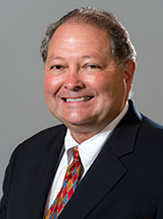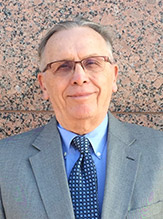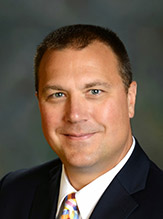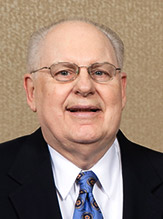 Looking backward while waiting for the volcano to blow again
Looking backward while waiting for the volcano to blow again
Will pandemic hindsight grant healthcare supply chain foresight?
The ongoing global pandemic involving COVID-19 and its delta variant(s) have taught us much about our lifestyles, our supply chains and ourselves, motivating executives, leaders and professionals in the healthcare supply chain to shed sacred cows and rethink historical and traditional operations going forward.
Many media outlets have chronicled the pandemic’s seemingly chaotic effects on supply and demand for products and services to the point that even healthcare horizon scanners strive to prepare for the next great crisis that threatens to overshadow this one.
Leaders & Luminaries posed a couple of key questions to the Bellwether Community about lessons learned from the pandemic. Specifically, what status quo-oriented operational beliefs, practices and/or rules should Supply Chain be bending – if not breaking – based on what has been learned during the pandemic-afflicted 2020 – and now even throughout 2021?

Brent Johnson
Brent Johnson, Bellwether Class of 2014
“Healthcare supply chain organizations must be more aggressive in managing their supply chains with increased authority from their organizations. Supply chain must be elevated to the C-suite if it isn’t already. The pandemic gave good justification for this.
“Future investment into supply chain resources [is needed] including people and technology to assist in improved management of needed strategies.
“Supply chain risk must be managed more closely with attention to where PPE (personal protective equipment) and other critical products are manufactured and by whom. Work more closely with suppliers to manage risk and business continuity.
“Having knowledge, through improved technology, of inventories across organizations regardless of ownership to help manage critical shortage issues [is also important].”

Carl Meyer
Carl Meyer, Bellwether Class of 2019, Vice President, The Wetrich Group
“Eliminate the waste of using value analysis to vet low-spend commodity products that have already been vetted by the provider’s GPO. Pick one of the contracted suppliers and move on, as there are far more important tasks that the time that would have been wasted can be applied to [cover].
“Review Just-In-Time’s appropriateness for items that are in high demand for which there is limited or no inventories at suppliers and distributors.”

Rand Ballard
Rand Ballard, Chief Customer Officer, Vizient Inc., Founding Sustaining Sponsor
“Just-in-Time (JIT) programs and stockless. And it is clear that having sequestered emergency supplies of PPE in your name and title is critical.”

Fred Crans
Fred Crans, Bellwether Class of 2020, Business Development Executive - Healthcare, St. Onge Co.
“Healthcare must become more collaborative. We are not 6,000 stand-alone adversaries involved in win-lose competition. The ‘fight for your stuff, screw everyone else’ methodology that took place when the pandemic struck helped no one. Local, regional and national collaboration need to be a common practice. Best practices need to be shared openly and often.
“Years ago, when I was a supply chain leader at a hospital in Northeast Ohio, I told someone, ‘We will never go out of business over the price of Band-Aids.’ Yet throughout the years, as collaboration became more possible – not just among [healthcare organizations], but with suppliers as well – the adversarial system remained in place. The pandemic should teach us that collaboration, not competition, should be the saving methodology for the industry.”

Steve Kiewiet
Steve Kiewiet, FAHRMM, FACHE, COO, CCS Health, and former Chief Commercial Officer, Intalere, Platinum Sustaining Sponsor (2019-2020)
“One belief that I would end is the idea that ‘value analysis’ or product evaluation can only be completed by the clinical team that is delivering care in a specific location. The idea that a nurse, doctor, therapist, etc. in Cleveland, Ohio, cannot possibly provide an effective evaluation of a product or a comparative of one product to another when the product is being used in San Diego is arrogant. It is time for a true national item master – or the medical product equivalent of an NDC in the pharmacy world – where product characteristics, properties, components, etc., are readily available and updated.
“The concept that supply acquisition costs can only be optimized through supply reduction, SKU reduction and market share commitments should be seriously challenged. It is beyond time for the industry to get to point-of-use demand capture with full data transparency up to the raw material provider. Use one – buy one. There are so many more value levers we would be working on together to improve the cost of care.
“The supply chain leader for every healthcare system should be in the C-suite and reporting to the CEO. A fully functional strategic supply chain organization has the ability to significantly impact an organization financially, operationally and strategically. Planning, forecasting, data science, resource management, risk management, customer experience, patient and clinician safety are all core competencies in a healthy supply chain organization.”
Jack Koczela, Future Famers Class of 2020, Director of Services, Supply Chain, Froedtert Health, Bronze Sustaining Sponsor
“We should be challenging our long-held beliefs around sourcing single products for a single purpose. We need to have multiple sources of products for many more ‘commodity’-type items to prevent stockouts and add flexibility to our supply chain. We should be much more willing to experiment with new ideas and act on them quickly.”

Siobhan O’Bara
Siobhan O’Bara, Senior Vice President, Industry Engagement & Services, GS1 US Healthcare, Silver Sustaining Sponsor
“Many healthcare suppliers traditionally follow a hub-and-spoke supply chain model, with centralized production and distribution. It’s very efficient for manufacturers, but it comes with a degree of risk. During the pandemic we saw disruptions exacerbated by centralized operations, and product availability complicated by the practice of single sourcing. A movement away from this model will help improve the industry’s ability to more efficiently deliver necessary products when and where they are needed.
“To build greater flexibility into your supply chain, you must first double down on master data management and ensure that the product information is complete and accurate. This will help suppliers and healthcare providers pivot quickly when the need arises for product substitutions and other inventory management actions. Second, I think supply chain diversity needs to be considered in place of supply chain streamlining. The hub-and-spoke model is the epitome of a streamlined supply chain, with centralized production, single sourcing, reduced raw materials inventory, efficient QA management and release. But when your single-source model fails – the ramifications are immediate. Moving to a tiered model of multiple sources and sites (which many world class organizations already have) will mitigate those risks.
“We also learned the importance of having deep knowledge and insight into the attribution of medical products. Early in the pandemic, understanding exactly where every component of a medical product came from was essential as suppliers attempted to exclude materials sourced from at-risk and affected regions. When the supply chain is fully aligned on the use of GS1 Standards, this information is available to supply chain partners in a shareable, interoperable format.”

Bob Yokl
Bob Yokl, Bellwether Class of 2019, Founder and President, SVAH Solutions
“I think sadly what was experienced for supply chain professionals during the initial phases of the pandemic was that there were no rules, equity, fairness and loyalty. Supply chain professionals had to make their own rules, find new partners and alliances to meet their day-to-day supply chain requirement. Moving forward, many supply operational beliefs will be changed out of necessity as we close in on a cure for this plague.”